Characteristic features of the style
The Bauhaus style in design was formed at the beginning of the 20th century and immediately became recognizable. Main characteristics:
- Functionality. The main task of interior design is to make the house comfortable and livable. This is what they think in Germany.
- People orientation. The core of the concept is the needs of the residents. Every detail of the interior is adjusted to their lifestyle.
- Minimalism. Only the most necessary furniture is about preserving space and about lean consumption. There should also not be a lot of decor - instead of bright prints, it is better to choose a solid color finish.
- Aesthetics. Style elements should not only be functional, but also beautiful.
- Modern materials. Initially, the production of furniture and other interior items began with the introduction of industrial textures (metal, glass, plastic).
- Geometric shapes. The simplicity of straight lines gives a special artistic touch to the Bauhaus style in the interior.
Color spectrum
The unshakable principle of the Bauhaus is the preservation of harmony. In the style palette, this is expressed in the combination of two opposites - in color, temperature, texture.
The main range is neutral. White, sand, graphite, black. These shades were inspired by nature itself - gray plaster, dark cold stone, warm brown wood, black metal.
You can't do without bright colors. The main ones were and remain pure yellow, red, blue, green. At the same time, the philosophy of the Bauhaus style explores them not only from a visual point of view. For example, the founders of the style believed that red objects seem closer, blue ones, on the contrary, farther. Or that sounds in a light room are louder, while dark ones drown them out.
Pictured is a living room with bright orange accents.
Finishes and materials
The neutrality of the basic elements continues in the decoration. Decorative plaster, paint, calm wallpaper are used for the walls. By the way, the latter were even made specifically for the needs of the style - the usual monograms and bright flowers were replaced by manufacturers with geometric ornaments, imitation of natural textures.
Suitable ceilings are simple single or complex multi-level. Preferably tall, light colored. The floor is as simple as possible. The decoration uses linoleum, laminate, parquet.
When choosing finishing materials, combine eco and high-tech with each other: glass, plastic, metal, wood, leather, textile surfaces are a Bauhaus style chip.
The photo shows a classic hall in the Bauhaus style
Furniture items
It is not for nothing that the ideologists of the Bauhaus style are considered trendsetters - they were looking for and finding completely new forms, adding simplicity, attractiveness and functionality together. Furniture production was distinguished by regular geometric shapes, clear lines, and the absence of decorative elements.
Built-in furniture is actively being introduced - bulky wardrobes, shelves, literally dissolve even in small apartments. Another invention is transformers. A folding sofa or table, modular upholstered furniture help to save space in the house, while retaining its functions.Stackable tables and chairs are another idea of advanced designers that is still popular today.
The designers tried to visually lighten the overall decoration - the armrests were removed on the armchairs and sofas, and everything decorating on the cabinet furniture got rid of.
As for materials, the Bauhaus easily combines previously incompatible pieces of furniture: expensive wood with cheap plastic, weightless glass with rough metal, natural leather with chrome pipes.
In general, bent pipes became a kind of flagship of that time (~ 20s of the XX century). That is the popular armchair of Marcel Breuer made of chrome-plated metal pipes with leather straps. A second example is open shelving, often used for zoning space.
Pictured is a minimalistic white built-in kitchen
Decor and textiles
Even such a pragmatic style as the Bauhaus is not without decorations. However, the decor is a continuation of the general principles.
A decorative element can be like something functional - for example, a stylish lamp, a set of dishes, a kettle, a board game or the furniture itself. So is a specific decoration - a picture, a carpet. But the drawing on them is extremely abstract. Colored circles, squares, ovals, triangles and rectangles are the basis of many pieces of art suitable for the Bauhaus interior.
By the way, geometric carpets are an integral element of the classic trend. The bright print on them perfectly complements the neutral decoration of the room.
The rest of the textiles - curtains, pillows, rugs, bed linen - could be as bright as carpets, or as simple as possible, monochromatic. The main rule is moderation. That is, you should not put a multi-colored pillow on a colored chair.
Pictured is a geometric carpet on the floor
Lighting
Competent bright light is not just a decoration, but an integral part of any Bauhaus interior. The more lighting, the more spacious the space becomes. They emphasize the necessary areas with light, set accents.
The glow temperature is closer to industrial, cold. Brightness is high.
The lamps themselves were supposed to decorate the room. Their design combined simple forms, unusual duets. The most popular example is the combination of chrome metal and frosted glass, as in the famous table lamp by William Wagenfeld and Karl Jacob Uecker.
No less famous is the lamp of Marianne Brandt - a small metal model, shaped like modern versions.
Photos in the interior of the rooms
Living room in the Bauhaus style - several comfortable armchairs, a simple coffee table, a console for television equipment.
The center of the bedroom is the bed - simple, comfortable. An additional storage area is considered - a simple wardrobe is one of the best solutions introduced by style designers.
In the photo there is a spacious room with a frameless sofa
The kitchen is the most functional room in the house. When developing a headset, not only ergonomics are taken into account, but also the needs of each family member. Furniture should make it easier to carry out daily tasks.
Photo gallery
Although the style flourished according to history in the 1920s and 1930s, many people are still happy to build their interiors according to the canons of the Bauhaus. After all, a lot of useful ideas can be gleaned from the philosophy of the direction.

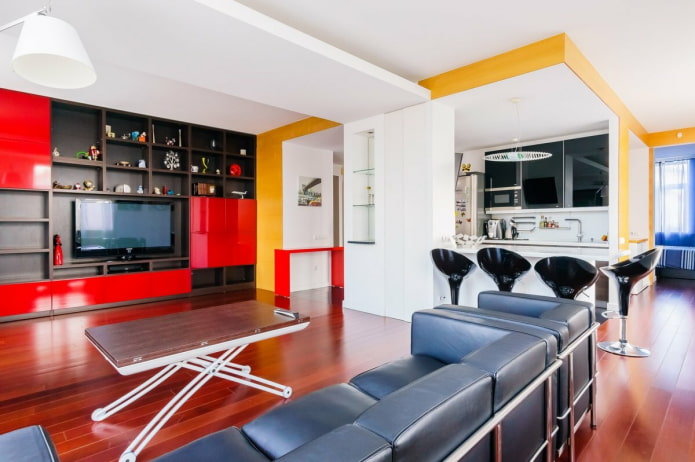
 10 practical tips for arranging a small kitchen in the country
10 practical tips for arranging a small kitchen in the country
 12 simple ideas for a small garden that will make it visually spacious
12 simple ideas for a small garden that will make it visually spacious
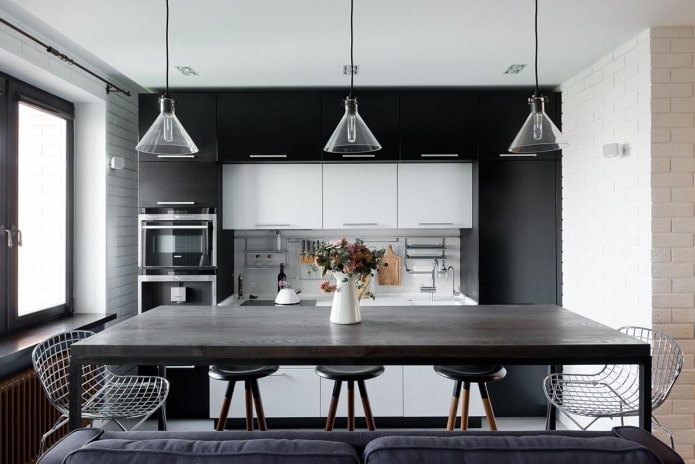
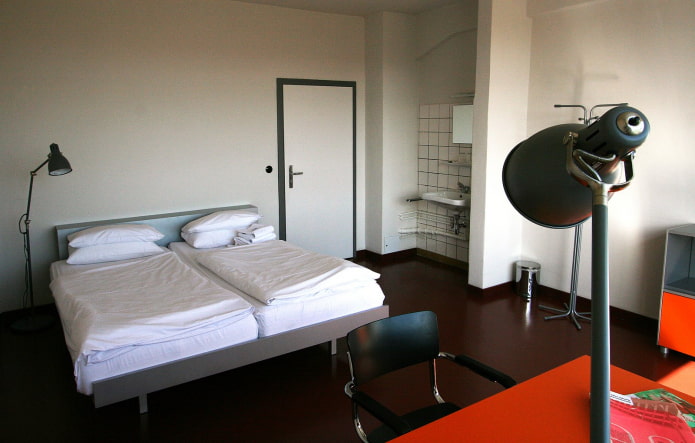
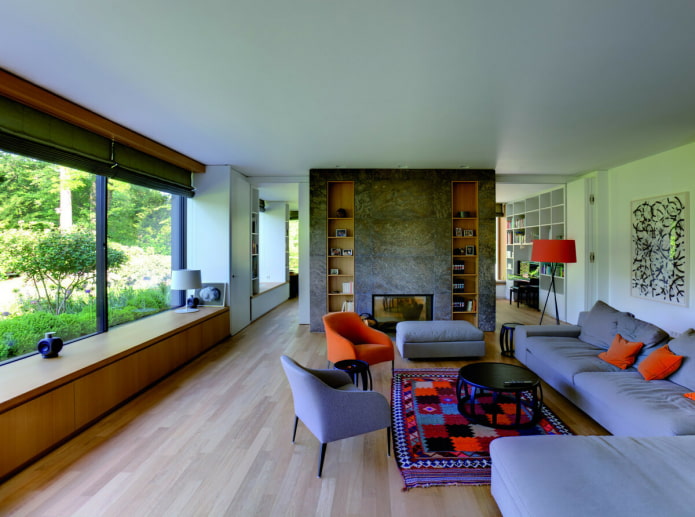
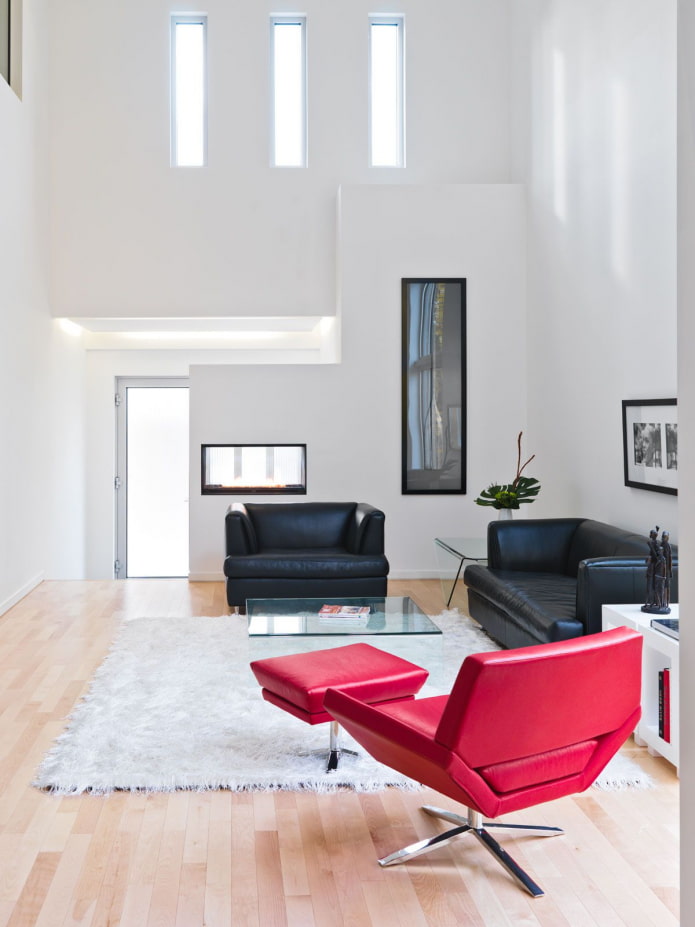
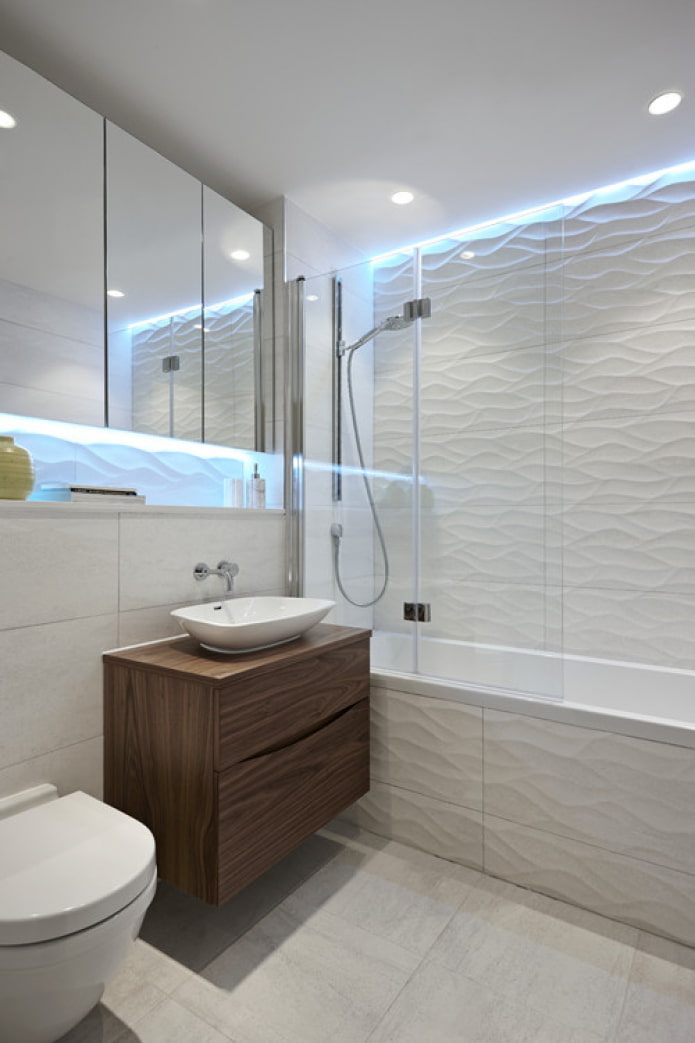
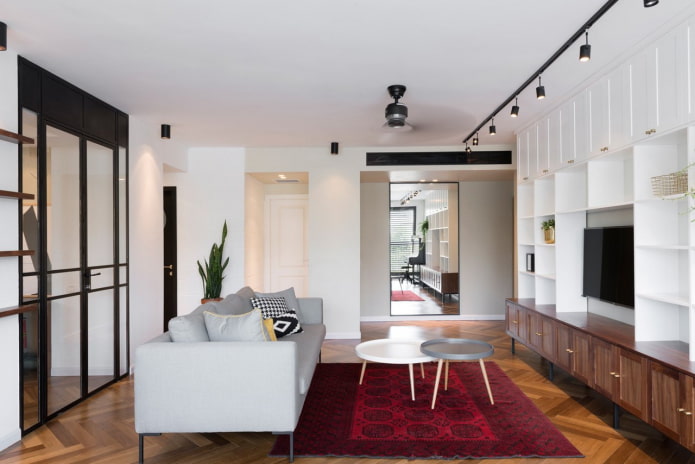
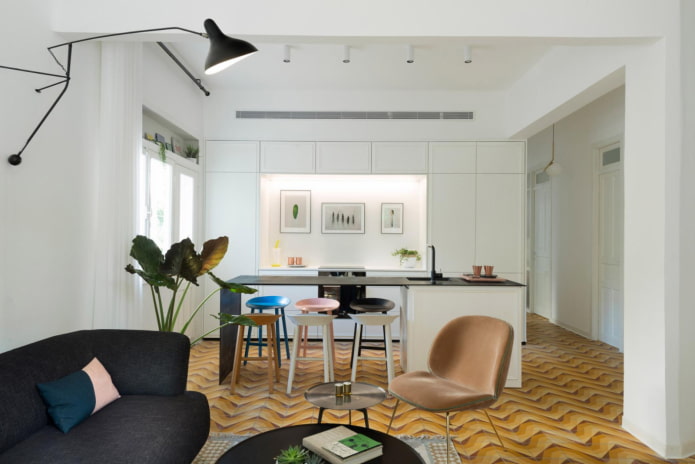
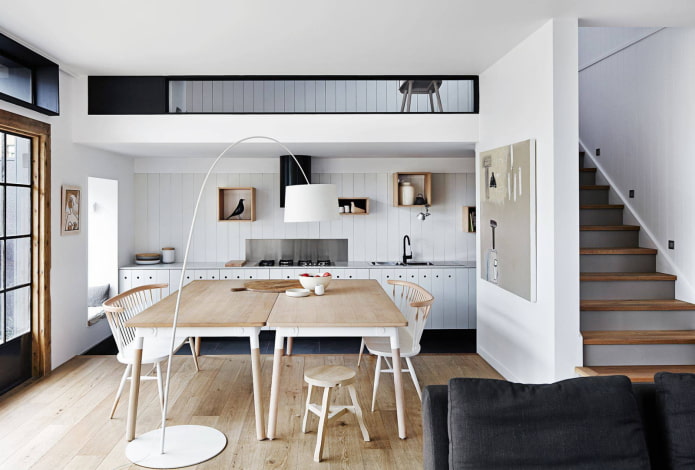
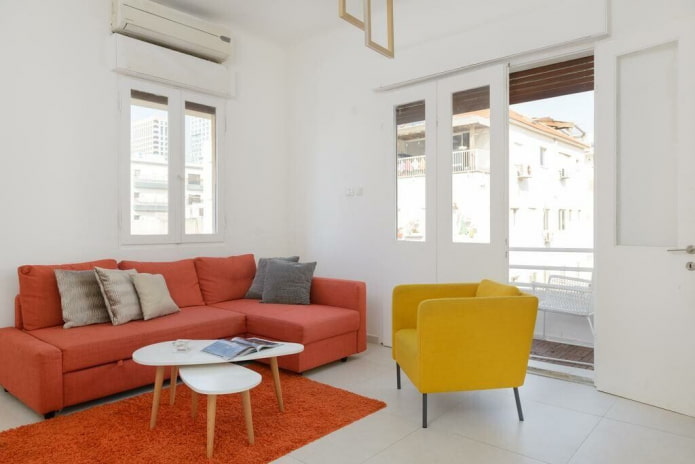
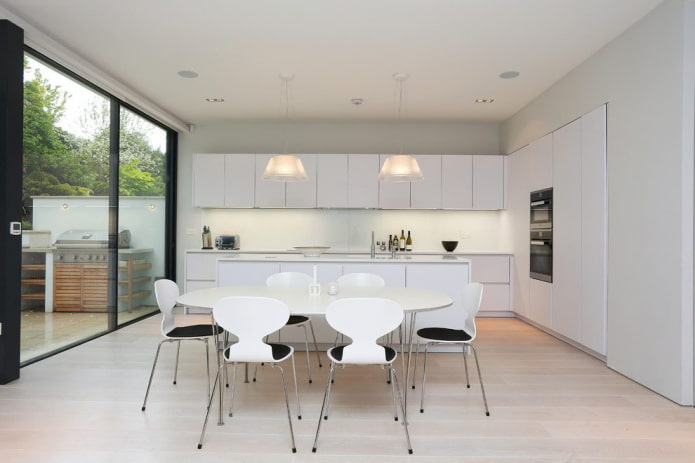
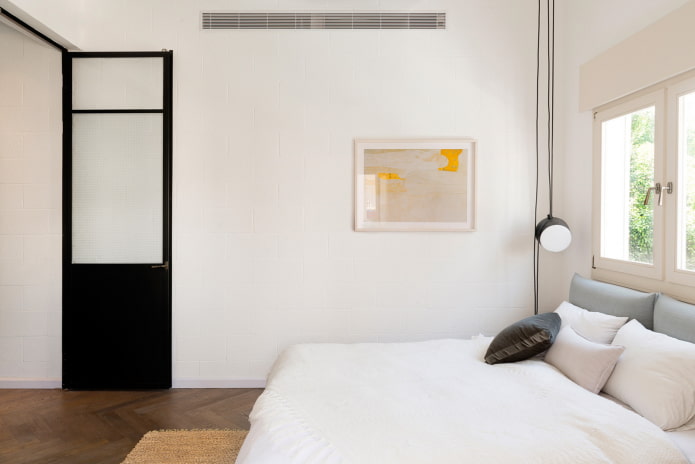
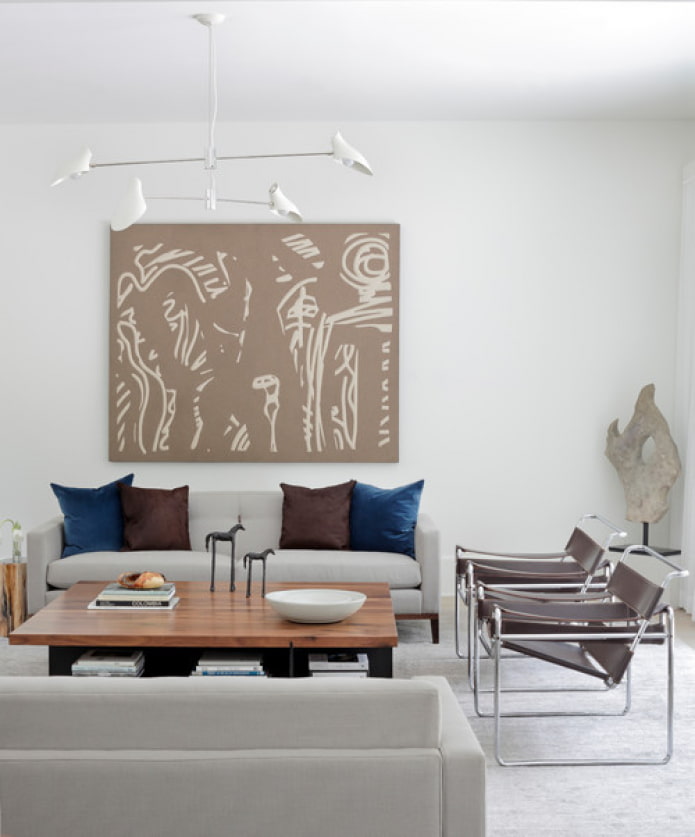
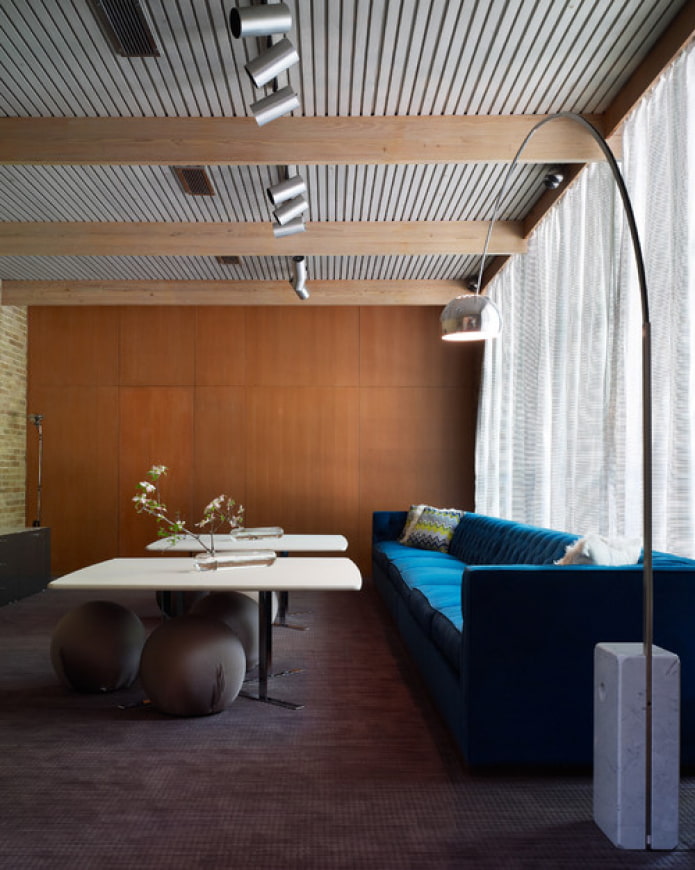
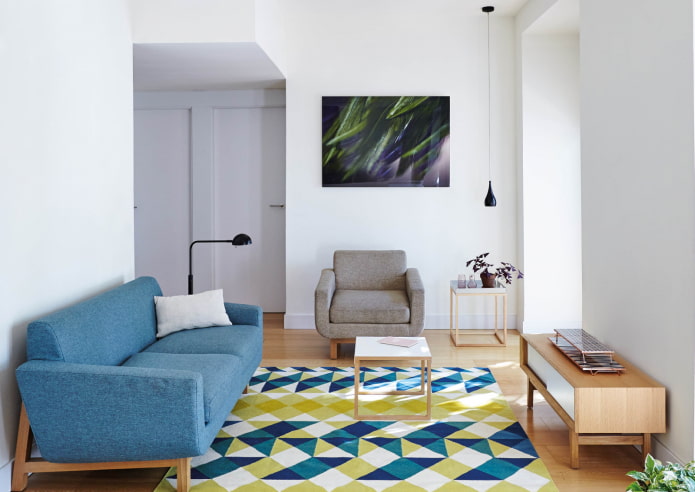
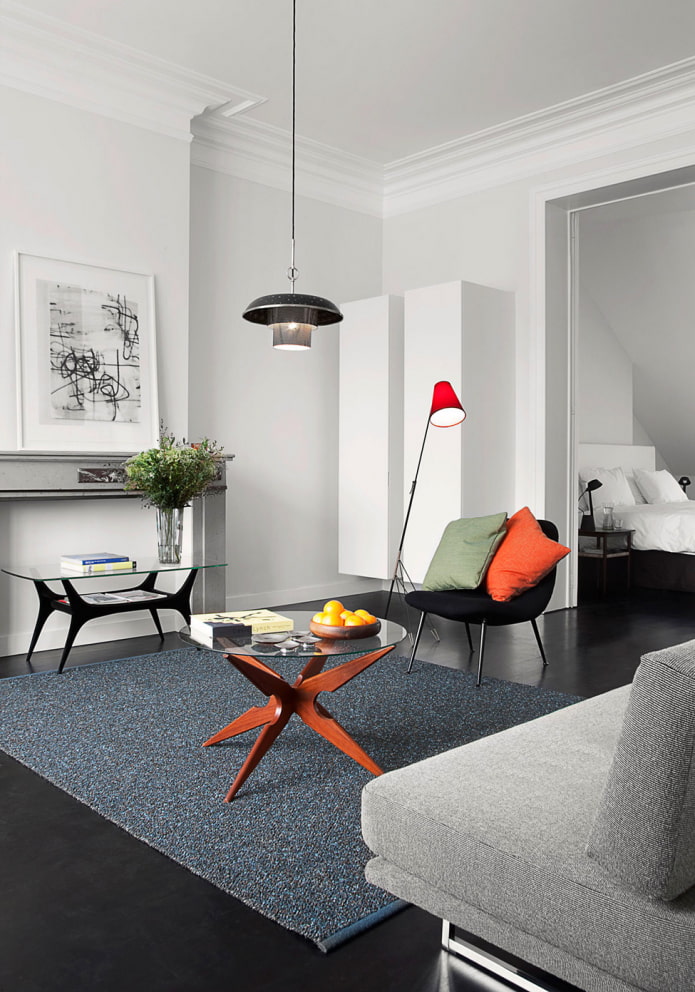

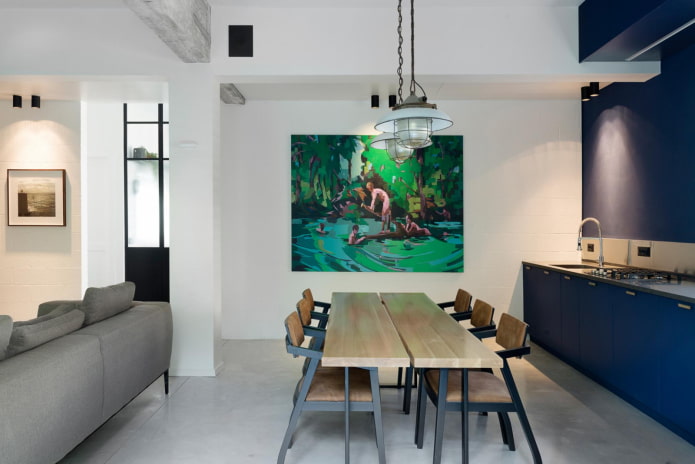
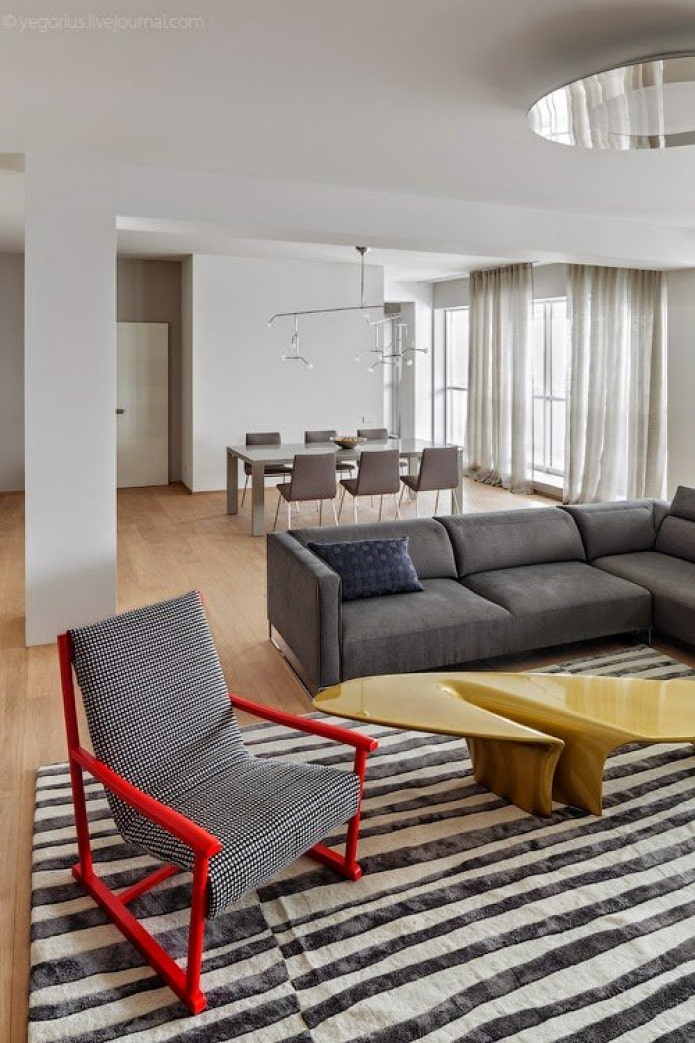
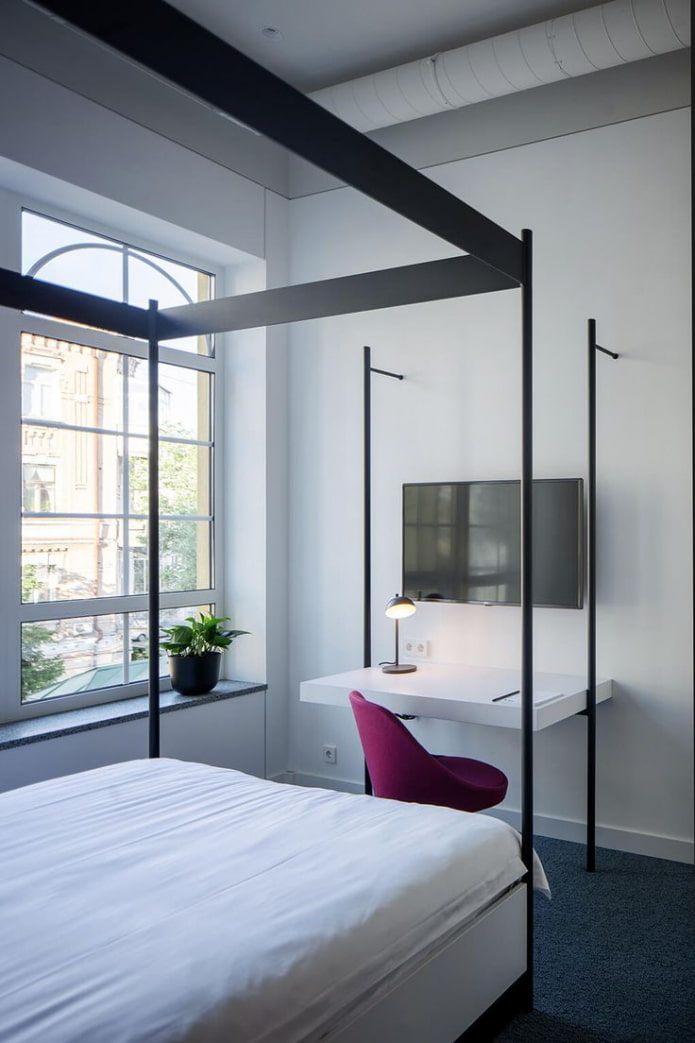
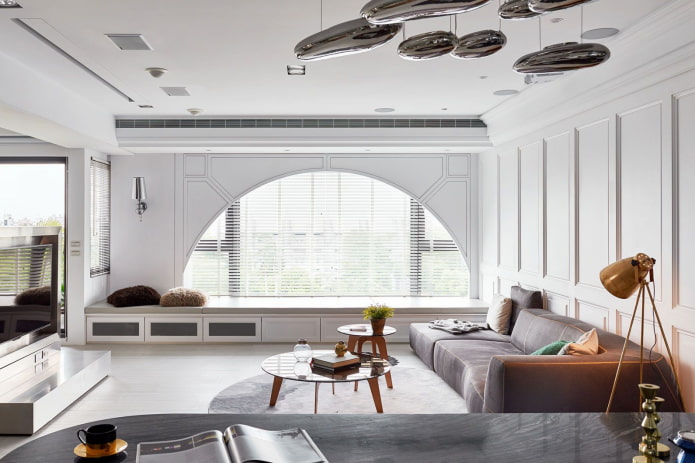
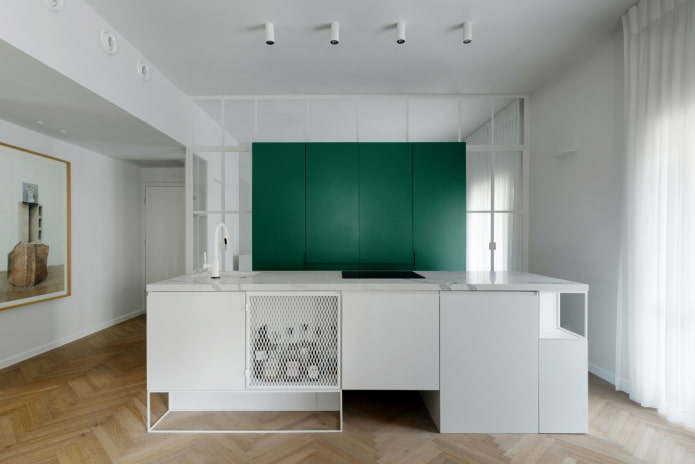

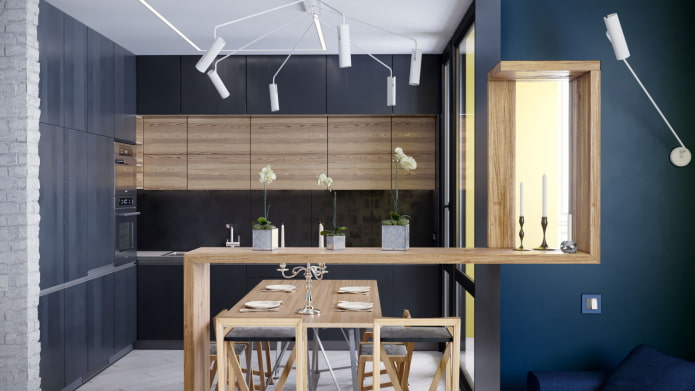
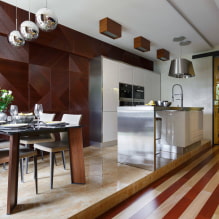
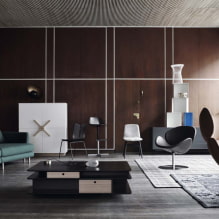
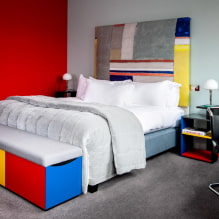
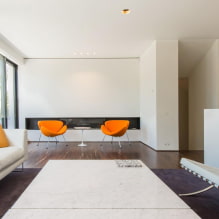
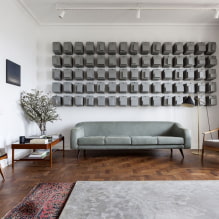

 13 bad habits a good housewife shouldn't have
13 bad habits a good housewife shouldn't have 24/7 home cleanliness - 4 secrets for the perfect housewife
24/7 home cleanliness - 4 secrets for the perfect housewife 6 hotels in Sochi that will give odds to the promoted foreign hotels
6 hotels in Sochi that will give odds to the promoted foreign hotels Top 10 interior design trends 2020
Top 10 interior design trends 2020 Rating of cheap TVs with Smart-TV
Rating of cheap TVs with Smart-TV New Year's LED garlands on AliExpress - we disassemble while it's hot, so that it's bright at home
New Year's LED garlands on AliExpress - we disassemble while it's hot, so that it's bright at home